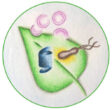Research

The intricate molecular processes underlying the cellular changes during plant immunity engage a high degree of proteomic plasticity and involve de novo synthesis of regulatory proteins, as well as their regulated degradation. Thus, it is inevitable to study the intimate interplay between protein synthesis, transport and degradation and how these pathways co-ordinate their functions to regulate plant immunity. In support of this, we discovered that regulated protein turnover via the ubiquitin-proteasome system (UPS) controls multiple aspects of plant immunity (Üstün et al., 2016). A significant role of the UPS in the regulation of plant immunity is further supported by the findings that plant pathogens have developed strategies to target and exploit the UPS for virulence. Several bacterial type-III effector proteins (T3Es) were shown to suppress plant defences by acting as E3 ligases (e.g. AvrPtoB), or by promoting ubiquitination of target proteins (e.g. HopM1). A more direct way to subvert the UPS is achieved by bacterial type-III effectors secreted that directly interact with proteasome components and thereby suppress proteasome function to suppress salicylic acid (SA)-mediated plant immunity (Üstün et al., 2013; Üstün et al., 2014; Üstün & Börnke, 2015). More recently, we revealed that Pst inhibits the proteasome by a certain effector repertoire, including HopM1 that seems to associate with UPS components (Üstün et al., 2016).
In addition to the UPS, autophagy is another major degradation pathway implicated mainly in cellular homeostasis, stress tolerance, and pathogen defence in eukaryotic organisms. Autophagic mechanisms rely on a core set of conserved AuTophaGy-related (ATG) genes to form double membrane vesicles, termed autophagosomes, that sequester and  deliver cytoplasmic cargo to lytic compartments (i.e. lysosomes/vacuoles) for breakdown and recycling (Üstün et al., 2017). Increasing evidence now indicates that autophagy also acts as selective mechanism to degrade protein aggregates, organelles and specific proteins, e.g. in cellular quality control and under stress conditions. Selectivity is mediated by autophagy adaptors such as NBR1 (Neighbour of BRAC1), which binds to ubiquitylated substrates and autophagosome-associated ATG8 proteins. Importantly, recent findings revealed that the proteasome is eliminated by autophagy (“proteaphagy”) in response to chemical proteasome inhibition and nutrient limitation, suggesting a functional link between the two proteolytic systems in plants. Recently, we have identified that plant pathogenic bacterium Pseudomonas syringae pv. tomato DC3000 (Pst) activates autophagy and leads to the degradation of the proteasome by the proteaphagy pathway to enhance its pathogenicity (Üstün et al., 2018).
deliver cytoplasmic cargo to lytic compartments (i.e. lysosomes/vacuoles) for breakdown and recycling (Üstün et al., 2017). Increasing evidence now indicates that autophagy also acts as selective mechanism to degrade protein aggregates, organelles and specific proteins, e.g. in cellular quality control and under stress conditions. Selectivity is mediated by autophagy adaptors such as NBR1 (Neighbour of BRAC1), which binds to ubiquitylated substrates and autophagosome-associated ATG8 proteins. Importantly, recent findings revealed that the proteasome is eliminated by autophagy (“proteaphagy”) in response to chemical proteasome inhibition and nutrient limitation, suggesting a functional link between the two proteolytic systems in plants. Recently, we have identified that plant pathogenic bacterium Pseudomonas syringae pv. tomato DC3000 (Pst) activates autophagy and leads to the degradation of the proteasome by the proteaphagy pathway to enhance its pathogenicity (Üstün et al., 2018).

Based on our finding we suggest that plant pathogens target the two major proteolytic degradation pathways to have a broad impact on the plant side, possibly affecting the triangle of protein synthesis-transport-degradation. Pathogen-induced activation of autophagy and suppression of proteasome function will lead to a massive degradation and/or accumulation of targets implicated in defence and other cellular processes. Additional effects of autophagy activation and proteasome suppression on processes such as protein secretion and translation are currently unknown and will be investigated in the Üstün lab. Another goal of the Üstün lab is to understand how the action of T3Es is able to modulate proteolytic pathways. Based on preliminary and previous results, we will utilize effector proteins as tools to dissect the autophagy pathway to reveal novel regulators of autophagy.

